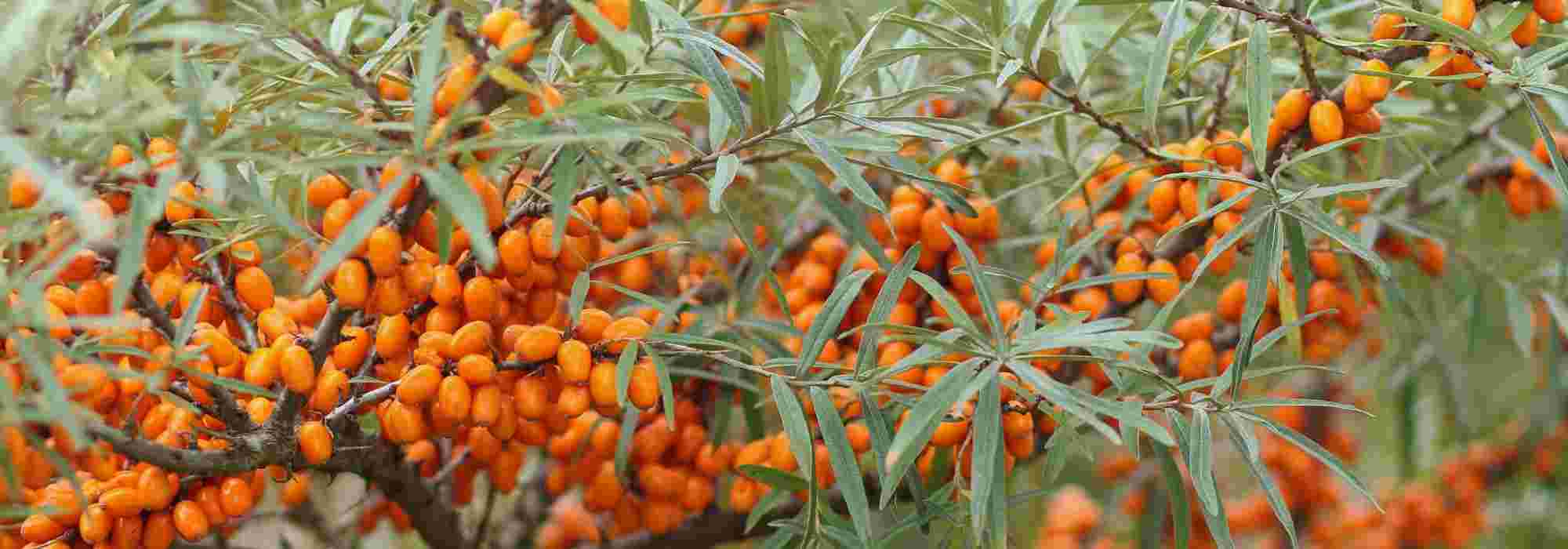
7 bushes with silver-grey foliage to have in your garden
Discover our selection
Contents
The silver-grey foliage bushes are so extraordinary that they deserve to be chosen based on this single criterion!
Generally frugal and resistant to sun and sea spray, these bushes are often essential in dry gardens and recommended for coastal areas. Their beautiful silver foliage brightens, blends with pastel shades, and tempers the most vibrant colours. They always bring a touch of elegance and purity to the garden. In some cases, the colour of the stems or the colourful flowering adds significant value.
Here are some of the most remarkable bushes for their hue.
Buddleia 'Silver Anniversary'
This variety of butterfly tree features a bright silver-grey tomentose foliage that truly sets it apart from classic Buddleias. This beautiful bush develops pubescent leaves that remain more or less evergreen depending on the climate. From August to October, the branches are adorned with terminal panicles of small, stout, fragrant white flowers that attract numerous butterflies. Less hardy than Buddleia davidii, it withstands temperatures down to about -7°C. It is a modestly sized variety particularly suited for small spaces and container cultivation, especially in colder regions. Not demanding regarding soil type, it thrives in well-drained soils, even poor and calcareous ones, and prefers sunny locations that are not too windy. In a shrub border, it will be a good partner for yellow-flowered potentillas, creating an intense contrast. Its grey foliage will add a softness of tones in perfect harmony with the pink or lilac hues of phlox, hardy geraniums, or lavenders.
- To learn everything about Buddleia, discover our complete guide: “Buddleia, Butterfly Tree: planting, pruning, maintenance”
- Discover our wide range of Buddleias
Read also
10 perfect bushes for a seaside gardenElaeagnus commutata 'Zempin'
This silver chalef with its lunar charm brings a true source of light to the garden! It quickly forms a beautiful, well-ramified bush with a supple habit, reaching up to 4m in height and 3m in spread. A bush of Elaeagnus Zempin is always noticeable from afar, due to the clarity and brilliance of its deciduous, downy grey-silver foliage that is always in motion, shimmering at the slightest ray of sunlight. Its slender leaves offer a magnificent greyish, matte colour on the top, with a silver and shiny underside. From May to June, it boasts an abundant, albeit discreet, flowering, fragrant with a spicy scent. It adapts to any ordinary, well-drained soil, even poor ones. With its resistance to intense cold, wind, salt spray, and drought, this Elaeagnus has its place in all gardens, whether by the sea or in a dry garden. It will look stunning planted alone, in large silver masses, or in a beautiful windbreak hedge along the ocean alongside other beautiful shrubs such as Abelia x grandiflora, Buddleia alternifolia ‘argentea’, Amelanchier ovalis, or Cistus laurifolius.
- Read our sheet: “Eleagnus or Chalef: planting, pruning, and maintenance tips”
- Discover our wide range of Chalef: our extensive selection of Chalef
Discover other Silver-grey foliage shrubs
View all →Available in 0 sizes
Available in 1 sizes
Available in 1 sizes
Available in 1 sizes
Available in 1 sizes
Available in 1 sizes
Available in 1 sizes
Available in 1 sizes
Available in 2 sizes
Available in 1 sizes
Hebe pimeleoides 'Quicksilver'
The Hebe pimeleoides ‘Quicksilver’ is a small Veronica that is very interesting for the contrast between its evergreen silvery-green foliage and the colour of its deep purple stems. From June to July, it produces spikes of lavender-blue flowers throughout the summer. The overall effect is a compact and spreading bush up to 90 cm wide, exuding great elegance. It is easy to grow in partial shade or full sun in rich but always perfectly drained soil, where it will withstand temperatures down to -15°C. With its modest height of 45 cm and width of 90 cm, it is ideal as groundcover, at the edge of a flowerbed, alongside cotoneasters, ceanothus, or forsythia, in rockeries, or even in pots (it will simply require regular watering during the growth period).
- To learn all about this bush and how to succeed with it in the garden, discover our complete guide: “Hebe, shrubby veronica: planting, pruning, and care”
- Discover our wide range of shrubby Veronicas here
Read also
12 bushes for dry or free-draining soilPollmix Sea Buckthorn (Hippophae rhamnoides)
This thorny bush (Hippophae rhamnoides ‘Pollmix’) is highly decorative thanks to its somewhat twisted appearance, its upright, highly ramified stems, and its fine deciduous foliage that is dark green on the top and silvery grey underneath. Fast-growing (nearly a metre per year), this bushy plant will reach heights of 3 to 5 m. Although very ornamental, this male variety will never bear fruit, which are small, bright orange edible berries in autumn, known as “sea buckthorns.” It is one of the hardiest and most accommodating shrubs. Very hardy, it can withstand temperatures down to -30°C and also tolerates drought, being indifferent to soil type; it thrives in full sun in all types of soil, even poor ones. In ornamental gardens, it can be planted in a free-standing hedge, a defensive hedge, or as a solitary specimen. In a shrub bed with silvery-grey tones, pair it with Perovskia ‘Silvery Blue’ and Salix exigua.
- To learn all about this bush and how to succeed with it in the garden, discover our complete guide: “Sea Buckthorn: planting, cultivation, and care”
- Discover our wide range of Sea Buckthorns
Santolina chamaecyparissus
Here is Silver Santolina, a very robust species of santolina. It is a beautiful Mediterranean evergreen and hardy shrub that immediately evokes the sun of the South. This species forms lovely cushions 20 to 40 cm high and approximately 40 to 80 cm in diameter. Its woody stems are covered with fuzzy, silver-grey, aromatic foliage, exuding a powerful scent of olive oil and turpentine. In Santolina chamaecyparissus, the leaves are finely divided and very dentate, resembling cypress scales, hence its nickname “little cypress santolina.” They are covered with a thick white felt. Throughout the summer, small golden yellow heads appear on this round bush.
Adapted to drought, Santolina is the quintessential dry garden plant. It thrives in full sun, in any well-drained soil, even stony and gravelly. Provide it with a dry, poor rockery or bank, where it will remain unperturbed under the sun and in the heat. It is also ideal as a silver punctuation in the middle of a border, in a strict edging, or in a pot on the terrace.
In a composition that evokes the garrigue, it will create a tableau of beautiful grey foliage when associated with an Artemisia, an Helichrysum italicum, and lavenders.
- To learn all about this bush and how to succeed with it in the garden, discover our complete guide: “Santolina: planting, caring for, pruning”
- Discover our wide range of santolinas
Salix lanata
The woolly willow is a bushy, compact shrub with nodose wood. Small in size and with relatively slow growth, it reaches a height of 1 m and a spread of 1.5 m. Its success primarily comes from its woolly foliage, which is a dark grey-green with a matte finish. In spring, it is crowned with large, spectacular golden and grey-yellow aments.
Adapted to very harsh climates, it is quite robust and thrives in sunny locations with well-drained yet moist soil. This willow, well-suited for small gardens, will be delightful whether planted alone, in a group, or in a rockery. For example, it can be paired with perennials and shrubs such as mountain savory, Santolina chamaecyparissus, Cytisus purpureus, and Arabis.
- To learn everything about this bush, discover the dedicated file: “Willow, Salix: plant, prune, and maintain“
- Explore our wide range of willows
Caryopteris (x) clandonensis 'Sterling Silver'
This hybrid caryopteris stands out with its particularly bright grey-silver deciduous foliage. Like other caryopteris, it is highly aromatic when crushed. This light and fragrant vegetation creates a beautiful backdrop for its late-season flowering, featuring airy bouquets of a rather vivid blue. It forms a small, bushy, rounded, and ramified bush, reaching heights of 1 to 1.20 m and widths of 90 cm. It thrives in sunny conditions and well-drained, even dry, soil, proving hardy down to -15°C to -20°C under these conditions. Plant this voluptuous and elegant bush in a very sunny border, a large rockery, or in a low hedge alongside summer-flowering shrubs as frugal as itself, such as yellow shrubby potentillas, ceratostigma plumbaginoides, lavenders, or dwarf buddleias.
- To learn all about this bush and how to succeed with it in the garden, discover our complete guide: “Caryopteris, Blue Spirea: planting, pruning, and maintaining”
- Discover our wide range of caryopteris: our extensive selection of caryopteris
- Subscribe!
- Contents
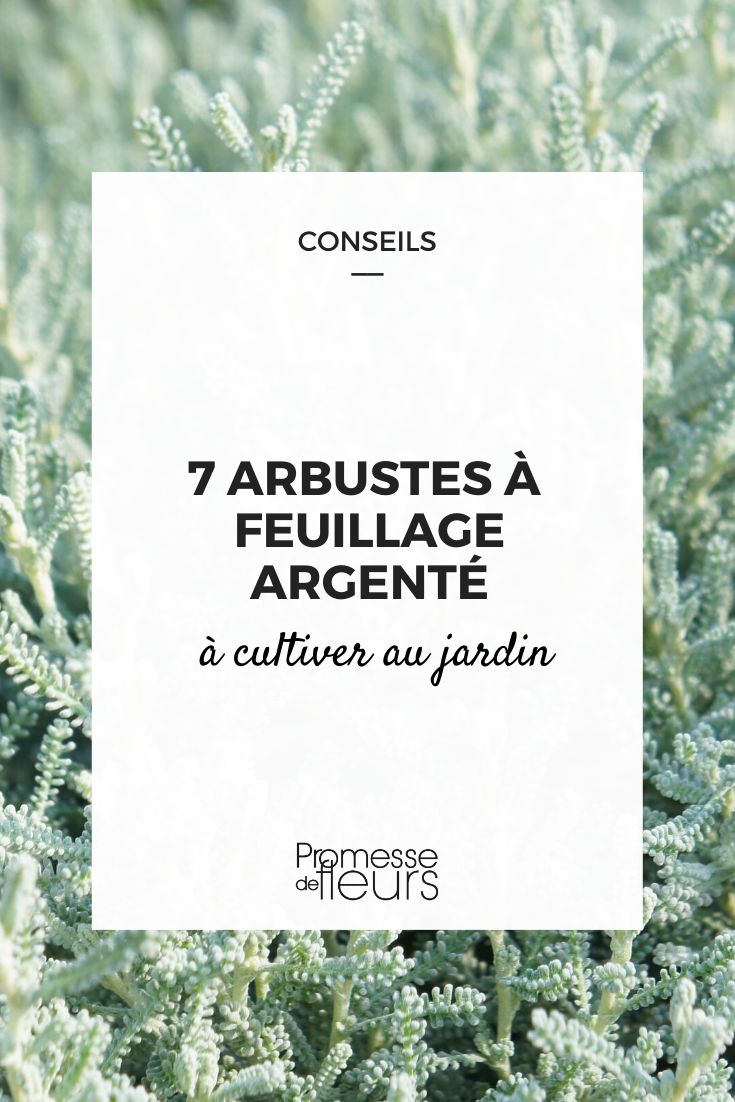































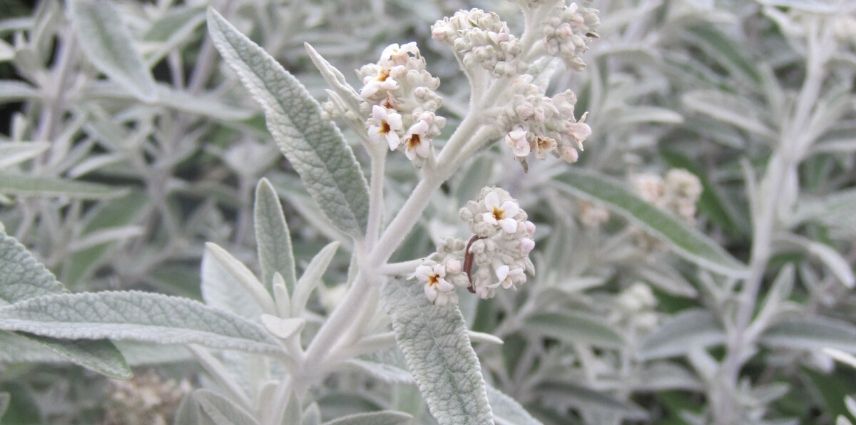
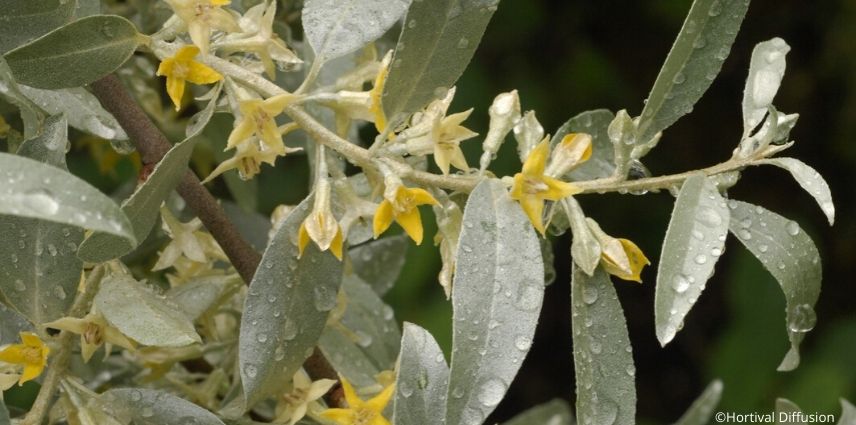




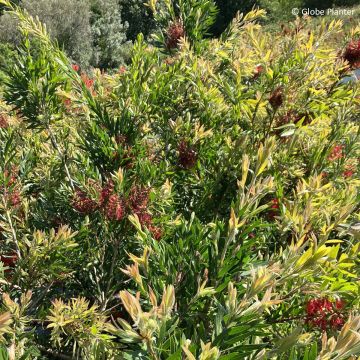
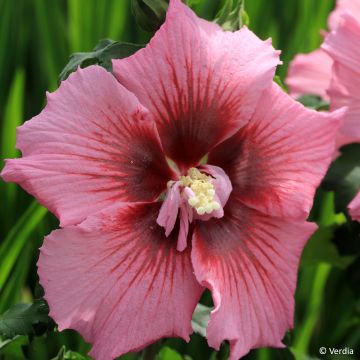
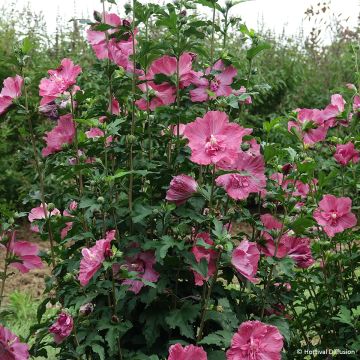



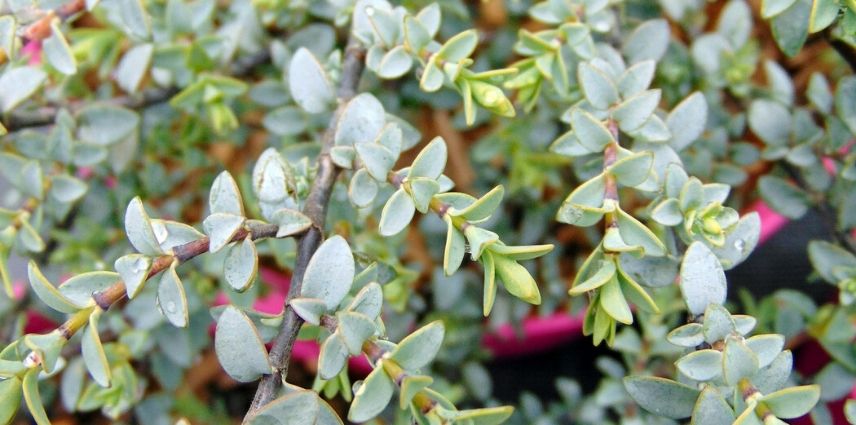
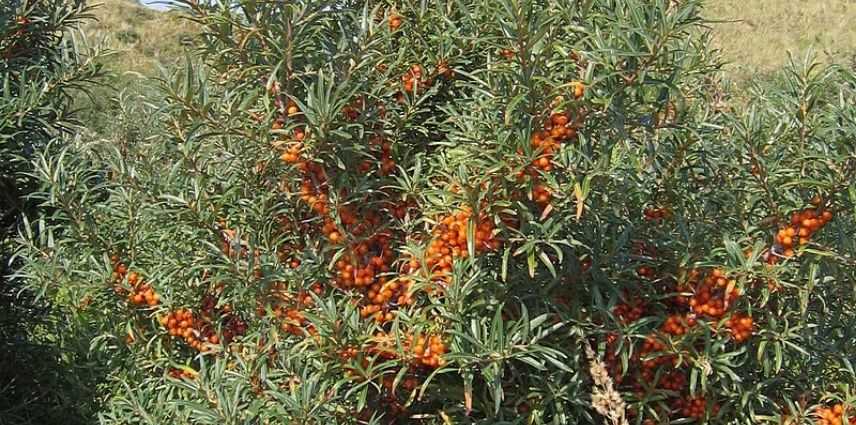
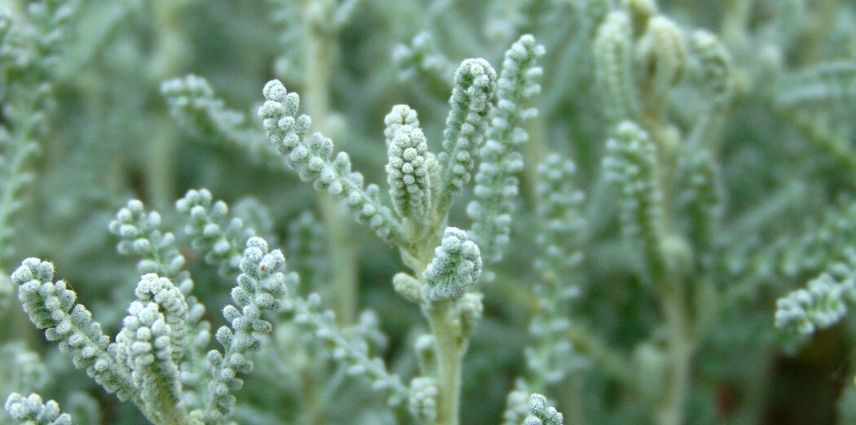
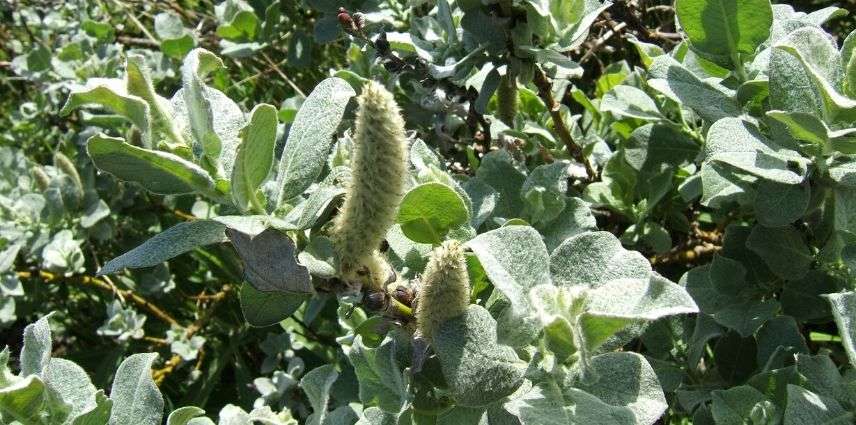
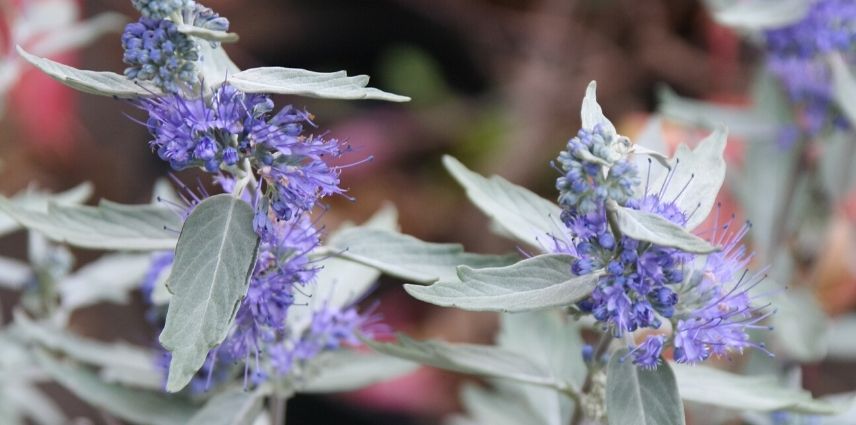
Comments